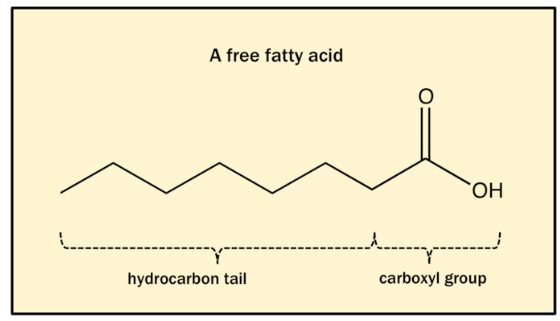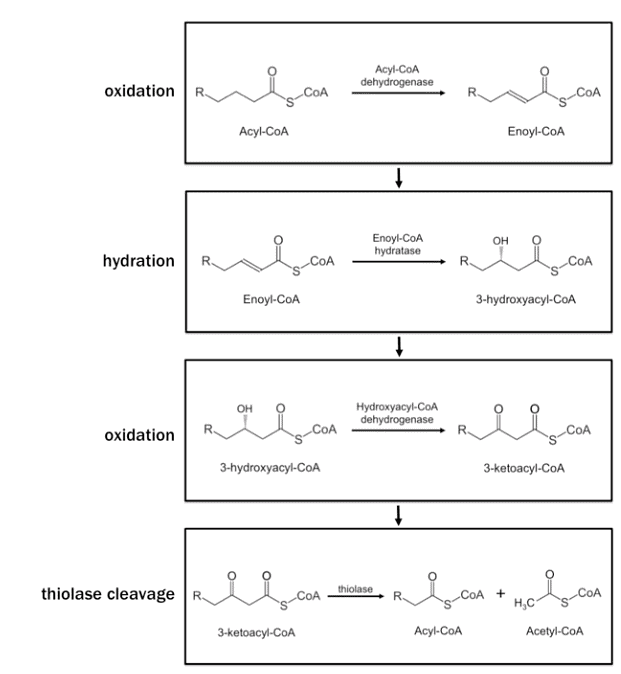Lipid Metabolism | Botany Optional for UPSC PDF Download
| Table of contents |

|
| Introduction |

|
| Key Points |

|
| Lipid Metabolism |

|
| β-oxidation |

|
Introduction
Lipid metabolism, specifically beta-oxidation, is a pivotal biological process that plays a vital role in energy production within living organisms. This article delves into the intricate details of lipid metabolism, shedding light on the degradation of fatty acids, their conversion into acetyl-CoA, and the significance of this pathway in the grand scheme of cellular energy production.
Key Points
- Lipids serve as both essential components of cell membranes and a primary energy source when metabolized.
- Lipid metabolism involves breaking down fatty acids, which are critical biological molecules and serve as the building blocks for more complex lipids.
- Lipids are hydrolyzed to release free fatty acids, which are further converted into acetyl-CoA through the β-oxidation pathway during cellular metabolism.
- Anaerobic digestion, a process often used for organic waste treatment, generates biogas, primarily methane, which can be utilized in generators for electricity production and boilers for heating purposes.
Key Terms
- carboxylic acid: Any of a class of organic compounds containing a carboxyl functional group.
- coenzyme A: A coenzyme, formed from pantothenic acid and adenosine triphosphate, that is necessary for fatty acid synthesis and metabolism.
Lipid Metabolism
- Lipids are fundamental biological molecules with various essential roles in organisms. They not only serve as the primary structural component of biological membranes in all living organisms but also play vital roles in microbial metabolism. One crucial aspect of lipid metabolism in microbes is their utilization as a primary energy source. This module introduces the concept of lipid metabolism, focusing on the process of fatty acid metabolism through β-oxidation.
- Fatty acids, the building blocks of lipids, consist of a hydrocarbon chain with variable length, terminating with a carboxylic acid group (-COOH). This basic fatty acid structure is a fundamental category of biological lipids and serves as a building block for more complex lipids like phospholipids and triglycerides. When metabolized, fatty acids provide a substantial amount of ATP, making them significant energy sources.
- Lipids serve as both an energy and carbon source. However, before complex lipids can be used for energy production, they must undergo hydrolysis. This process involves the action of hydrolytic enzymes called lipases, which release fatty acids from derivatives such as phospholipids. Once released, these fatty acids enter a dedicated pathway that facilitates step-by-step lipid processing, ultimately yielding acetyl-CoA. Acetyl-CoA is a crucial metabolite that transports carbon atoms into the tricarboxylic acid (TCA) cycle, also known as the Krebs cycle or citric acid cycle. In the TCA cycle, these carbon atoms are oxidized to produce energy.

Figure: An example of a fatty acid: A fatty acid is a carboxylic acid with a long aliphatic tail that may be either saturated or unsaturated. The molecule shown here is the eight-carbon saturated fatty acid known as octanoic acid (or caprylic acid).
β-oxidation
β-oxidation is the metabolic process responsible for breaking down fatty acids and their lipid derivatives. This process is somewhat analogous to the mechanism of fatty acid synthesis but occurs in reverse. Essentially, β-oxidation involves the sequential removal of two-carbon fragments from the carboxyl end of the fatty acid molecule. This process includes dehydrogenation, hydration, oxidation to form a keto acid, and finally, cleavage by thiolysis. The result is the liberation of acetyl-CoA, which can subsequently be converted into ATP through the tricarboxylic acid (TCA) cycle.
β-oxidation can be broken down into discrete steps:
- Activation: To initiate fatty acid metabolism, activation is required. During this step, a coenzyme A (CoA) molecule is added to the end of a long-chain fatty acid, converting it into an activated form known as fatty acyl-CoA. This activated fatty acid then enters the β-oxidation pathway.
- Oxidation: The initial phase of β-oxidation is catalyzed by acyl-CoA dehydrogenase, which oxidizes fatty acyl-CoA to produce enoyl-CoA. This oxidation introduces a trans double bond into the acyl chain.
- Hydration: In the second step, enoyl-CoA hydratase adds water to the double bond created in the previous step, forming an alcohol (-C-OH).
- Oxidation: Hydroxyacyl-CoA dehydrogenase then oxidizes the alcohol group formed in the previous step to create a carbonyl group (-C=O).
- Cleavage: A thiolase enzyme cleaves acetyl-CoA from the oxidized molecule. This cleavage also results in the generation of an acyl-CoA molecule that is two carbons shorter than the original one that entered the β-oxidation pathway.
 Figure: β-oxidation: The sequential steps of the β-oxidation pathway.
Figure: β-oxidation: The sequential steps of the β-oxidation pathway.
|
179 videos|143 docs
|



















